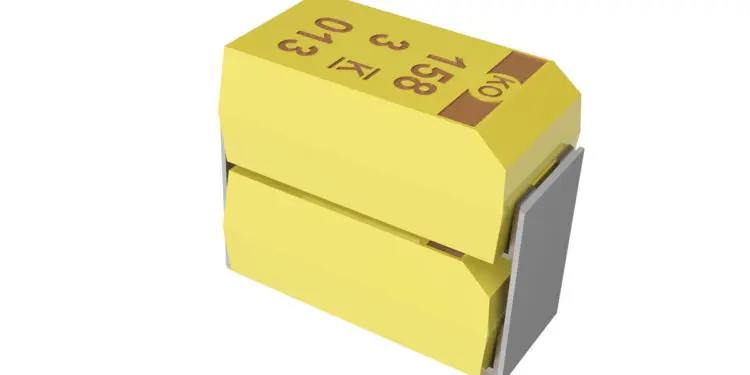- Stacking construction offers higher capacitance and voltage for GaN semiconductor requirements
- Polymer Hermetically Sealed 75V extension saves board space with exceptional capacitance stability over operational temperature
KEMET, a leading global supplier of electronic components, continues to develop and design solutions suited for alternative energy, industrial/lighting, medical, defense and aerospace, and telecommunications applications with the new Tantalum Stack Polymer (TSP) O 7360-43 and the 82uF/75V rated voltage extension in Polymer Hermetically Sealed.
The TSP series is designed to provide the highest capacitance/voltage (CV) ratings in surface mount device (SMD) capacitors with its innovative stacking construction. These new capacitors are well suited and sized for use in high voltage power management applications such as buck boost converters, filtering, hold-up capacitors, and other high ripple current applications that require a small form factor, stable performance, and long operational lifespan.
KEMET’s KO-CAP® High Reliability Series T540, T541 and T543 are all available for stack configuration in the TSP series. When stacked, these capacitors allow design engineers to customize for capacitance, voltage, and low ESR (equivalent series resistance). This feature makes the TSP series ideal for devices using Gallium Nitride (GaN) semiconductor technology, including radar applications based on the Active Electronically Scanned Array (AESA) systems. The TSP series also offers improved derating conditions and larger capacitance to ensure a low failure rate for typical voltage levels, as well as multiple failure rate options when utilizing Series T540 and T541 in a stack configuration.
The TSP series is qualified for numerous applications, including airborne, grounded, and naval equipment where GaN radio frequency (RF) semiconductors are part of the design. According to a May 2020 report from Yole Développement*, the total defense market for GaN radio frequency (RF) applications is expected to grow at a CAGR of 22% and surpass USD 1 billion in 2025, while the total GaN RF market will reach over USD 2 billion in 2025. The report also states that application in AESA systems for radar and demand for lightweight devices for airborne systems are the main drivers of the GaN RF defense market. Furthermore, the TSP series can fully support other high power, high frequency, and long-life requirement designs in telecommunications and industrial applications.
The tantalum polymer capacitors series is available immediately via KEMET distributors. To learn more about their capabilities and applications, visit https://ec.kemet.com/polymer-high-reliability/.
*Source: GaN RF Market: Applications, Players, Technology, and Substrates 2020, Yole Développement (Yole), May 2020































